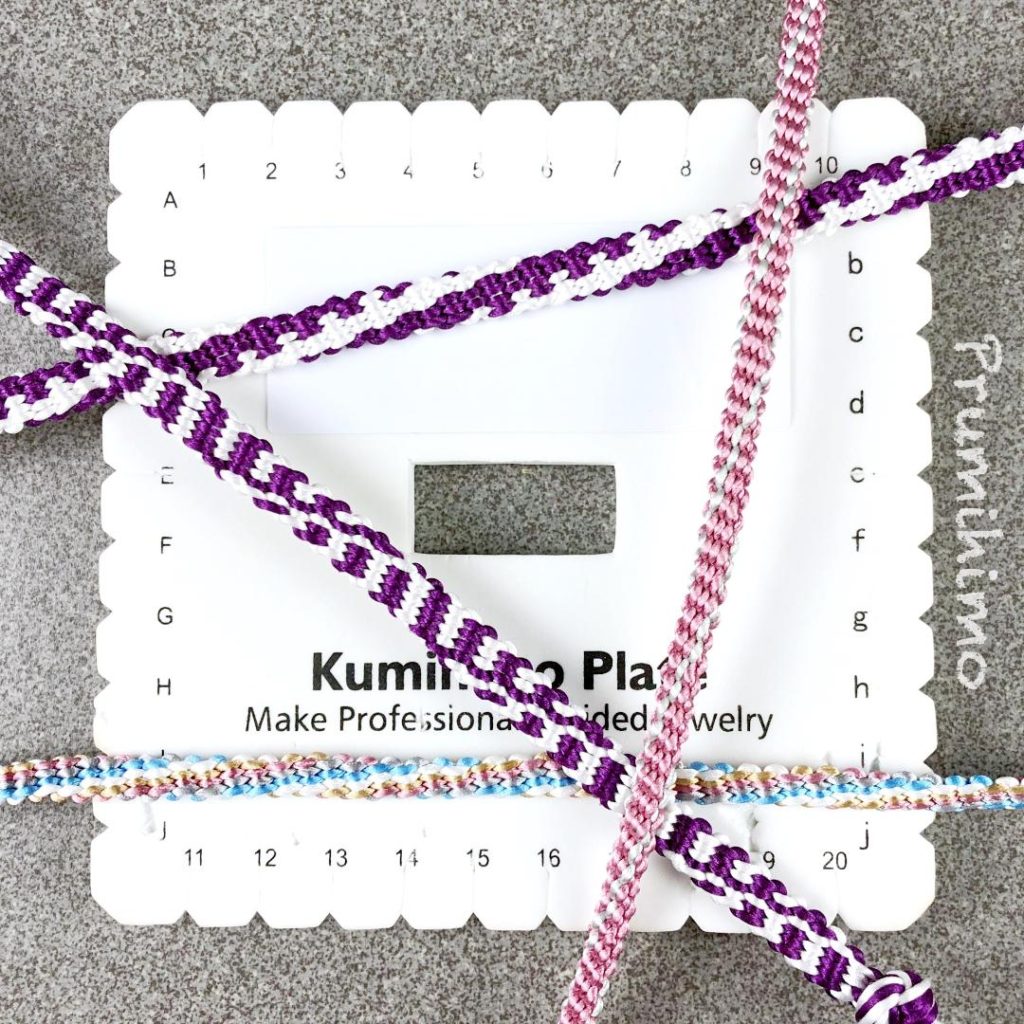
I am very pleased to be able to tell you that I have just uploaded a new video to my YouTube channel. This one follows on from my series of videos using the square plate and I am introducing a new braid. This braid has an interesting history. Way back in 2013 I saw a similar braid posted on Facebook. Unfortunately I cannot remember the name of the person who posted it, which is a great shame. At the time she gave instructions, but I could not get the instructions to work. The person was not a native English speaker, so perhaps something got lost in translation or perhaps a step was missed out by mistake. I was unable to get any clarification so I gave up, but I liked the look of the chunky braid so I came back to it at a later stage I experimented with different cord moves until I could get it to work. Whether I recreated her braid or developed one of my own I will probably never know, but I would love to be able to give credit to the person who first showed me this type of braid.
I am often surprised by how underused the square plate is and I think there are several reasons for this. In comparison to the regular round disk I think it is fair to say that the square plate is not as versatile and it is not as good for beaded braids. It is also fair to say that it can be difficult to achieve the correct tension on some flat braids, resulting in uneven sides to the braids. However, I also believe that the information and instructions available for flat braids are limited, especially on YouTube. Almost all videos are for one of 2 braid structures (anda gumi and une gumi) and in my opinion these are not the easiest of braids for beginners from a tension point of view. I have filmed instructions for both of these braids and my aim was to explain how to get the tension right. I have also filmed videos for a third braid structure, both with and without beaded sides and in my experience this braid is much easier for beginners. So my new video offers a fourth braid structure.
The other issue with flat braids is that there seem to be no standard names for the braids. The Japanese names are sometimes used to destinguish between the 2 well known braids, une gumi and anda gumi, but beyond that there are no commonly known names for other braids and some flat braids may not originate from Japan. The names in English vary as well, so they are not much help either. As a result I find it more helpful to think of the braids in terms of the construction and the number of cords worked across the braid. I explain more about this in the video and I have also written about it here on this website.
Now is a good time to try something new, so I hope people will enjoy this video. The next video to be uploaded will show how to add beads to this braid.
To watch the video please click here
I provide a page of additional information such as the timings and any extras I am asked for. I add to this page as required. To read it please click here.

